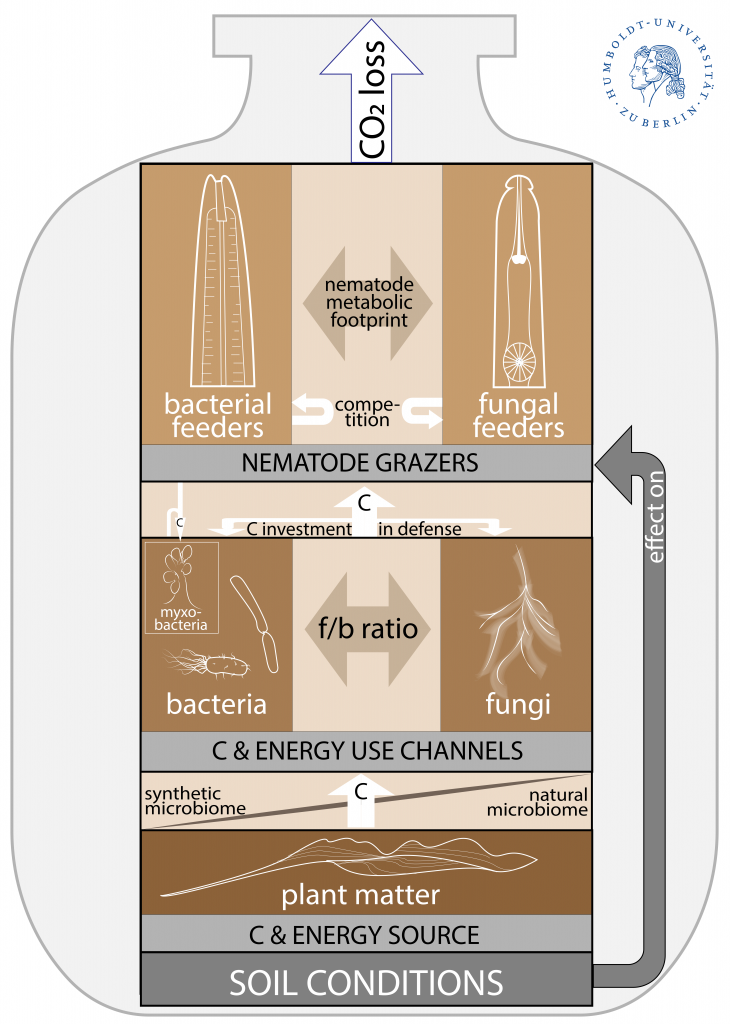Carbon and energy flow in the soil microbiome – functional groups, activity and interactions in trophic networks

The soil microbiome is a main driver for the carbon (C), nutrient and energy flow in soil ecosystems. Among these micro-biota, nematodes are the most abundant and diverse multi-cellular organisms, with functional groups at each trophic level of the micro-food web. The combination of their life history traits with functional guilds allows for determination of decomposition pathways, food web disturbance, enrichment, and structure. Further, metabolic footprints, i.e. trait-based measurements of morphological (body mass) and physiological (respiration) characters, correlate with environmental properties and mirror e.g., the responsiveness to resource pulses. Nematodes are therefore an ideal model group to assess the C flux to and activity of higher trophic levels in the microbiome and to relate this to energy dissipation.
This project investigates the interactions between functional groups of grazers (e.g., intra-guild competition/predation) in soil with its natural microbiome and, for a mechanistic understanding, in soil with a defined microbial and nematode community. Using the signal of 13C labeled maize as resource this will reveal not only changes in the density and structure of the grazing fauna, but also the different C pools and fluxes. In collaborating projects, the microbial community is assessed with a combination of PLFA- and DNA-SIP along with amplicon and metagenome sequencing. This multi-factorial approach provides novel insight on the identities, succession, and functional niche partitioning of key microbiome members in the detritusphere. Within the framework of the SPP Core Projects, the impact of soil conditions (soil type, SOM content, substrate quality, moisture, temperature) on the grazes diversity, abundance and activity as well as the C flux to higher trophic levels is determined. Overall, this project delivers a systemic view on the processes in the micro-food web, relating C turnover and changes in energy to the soil microbiome.
Link to English scientific abstract
Link to German scientific abstract